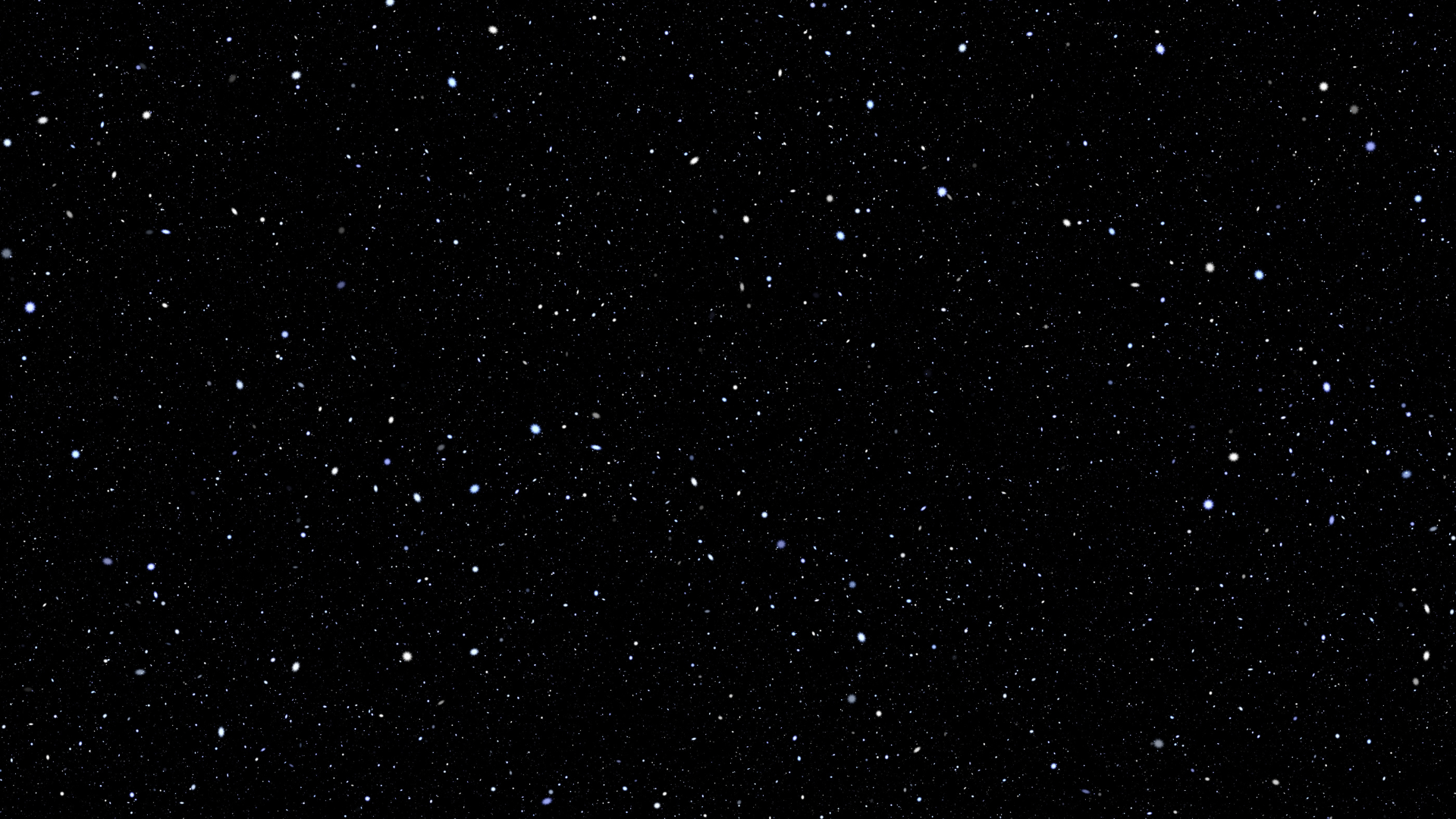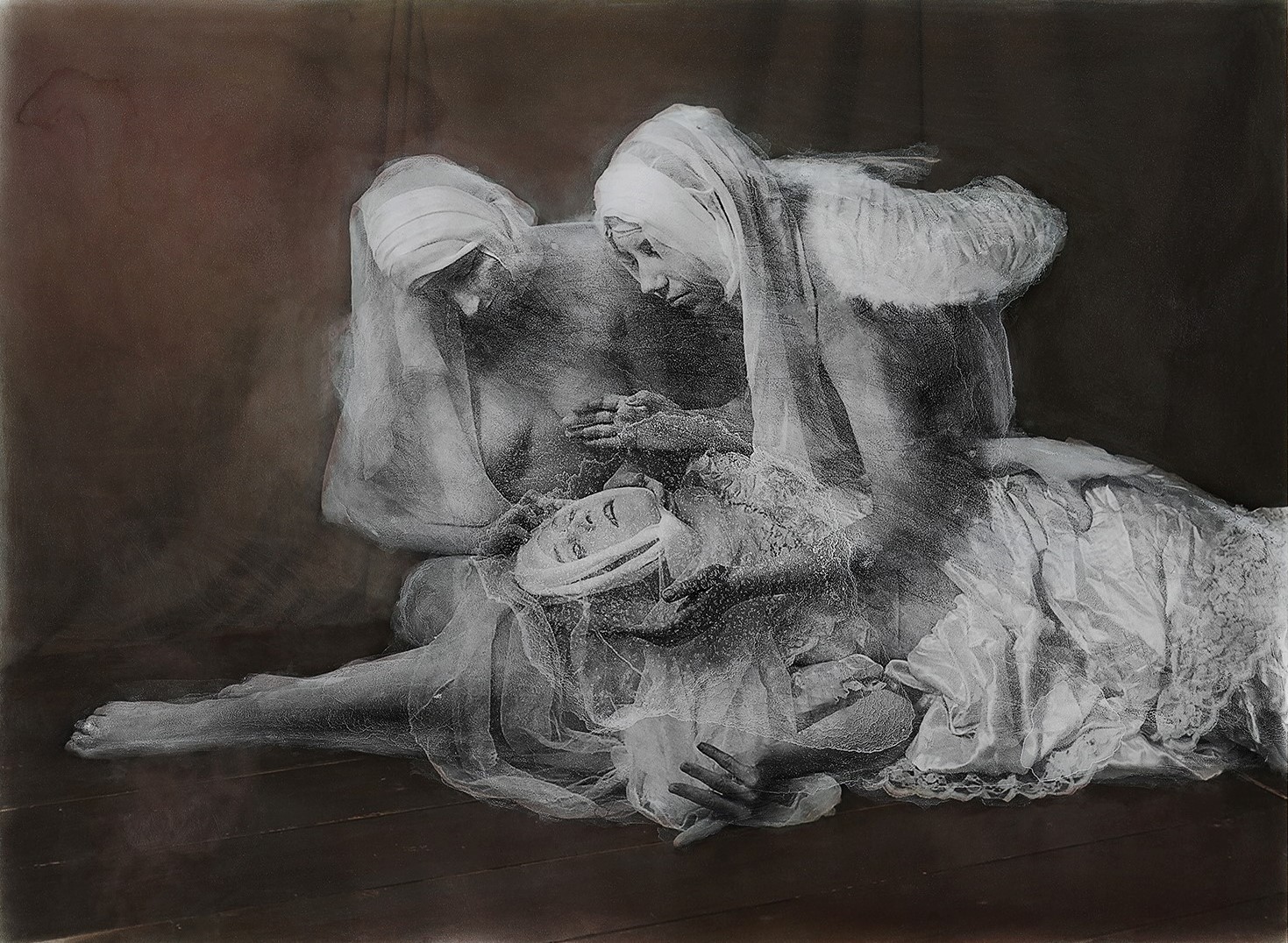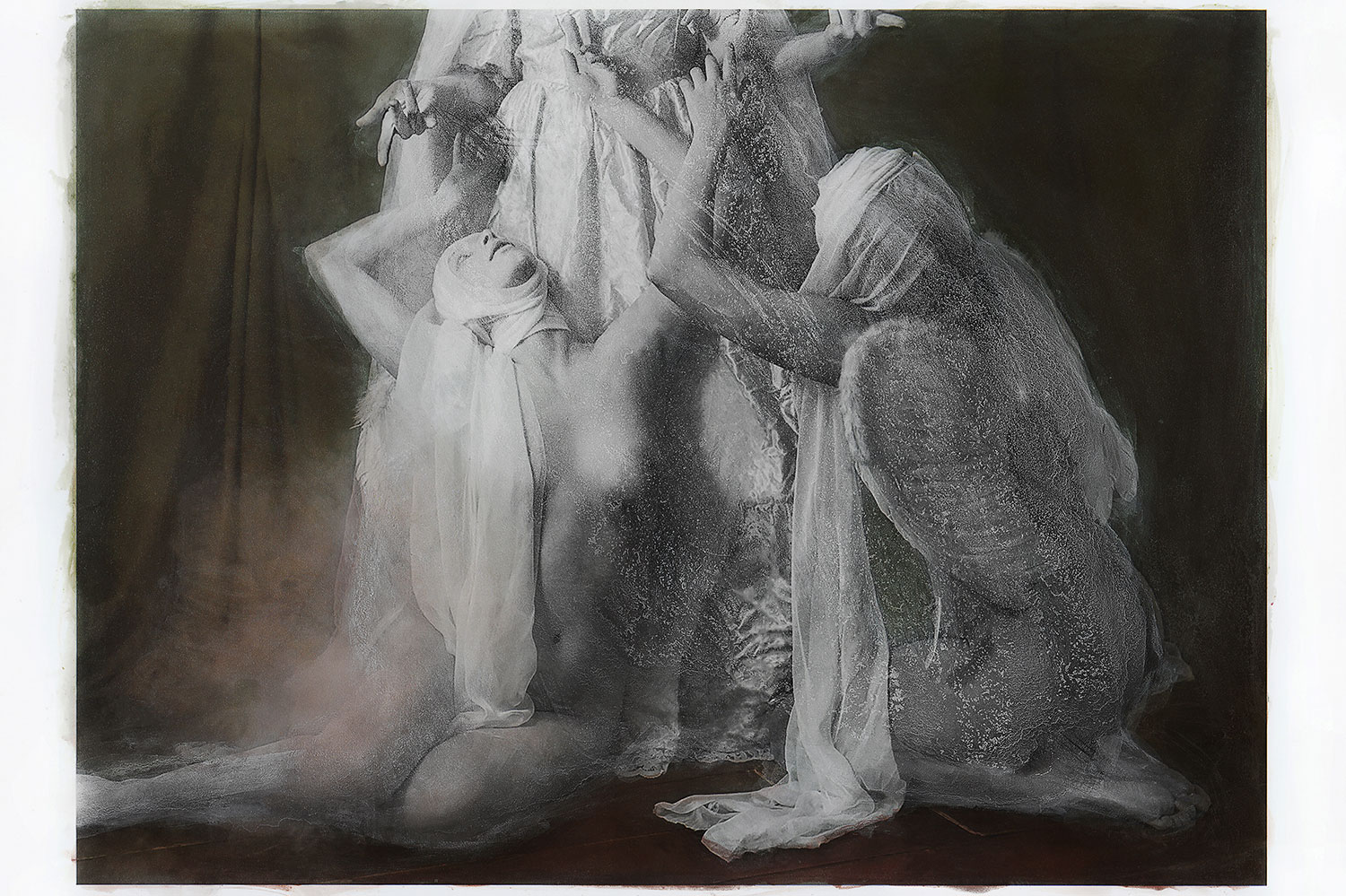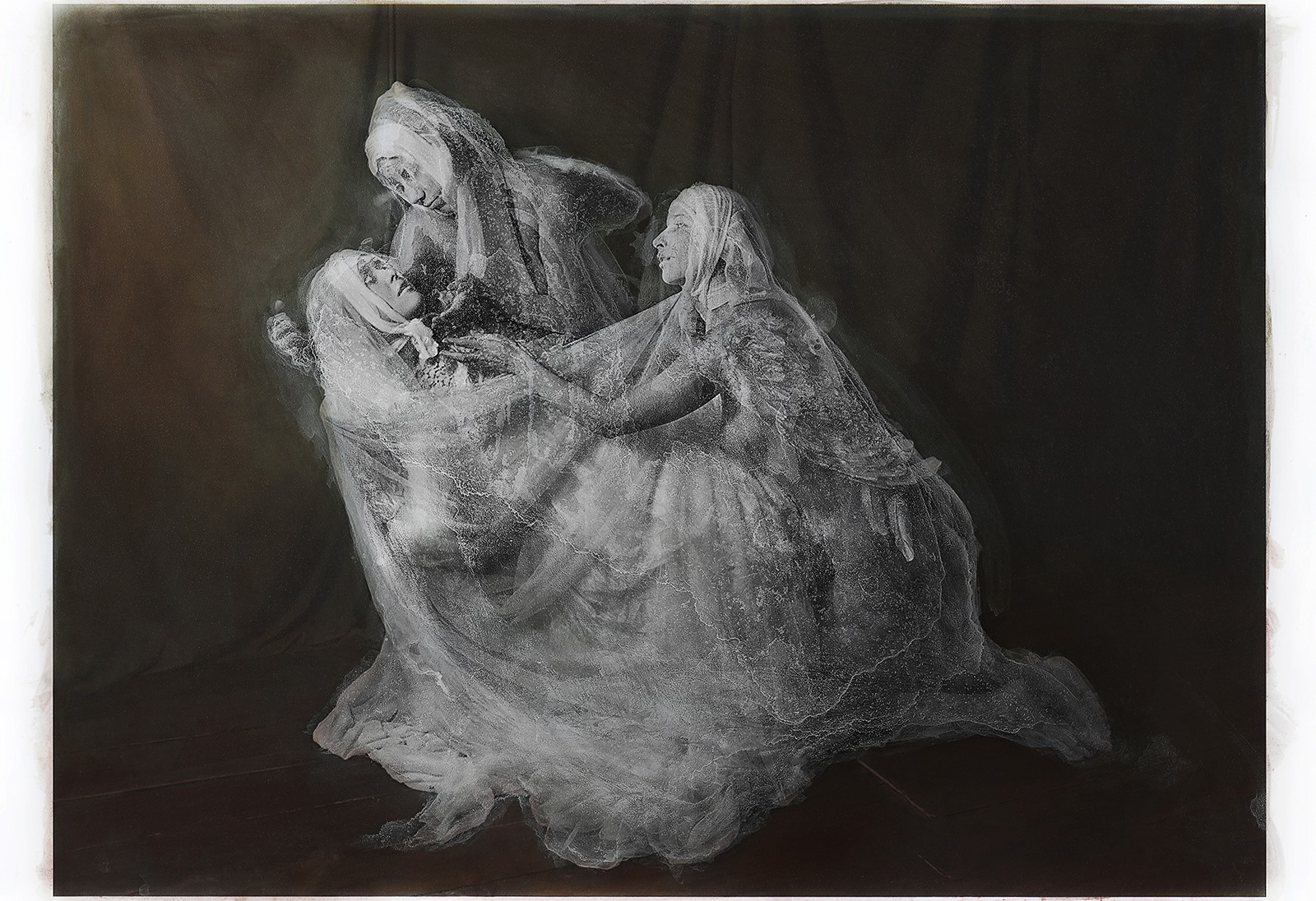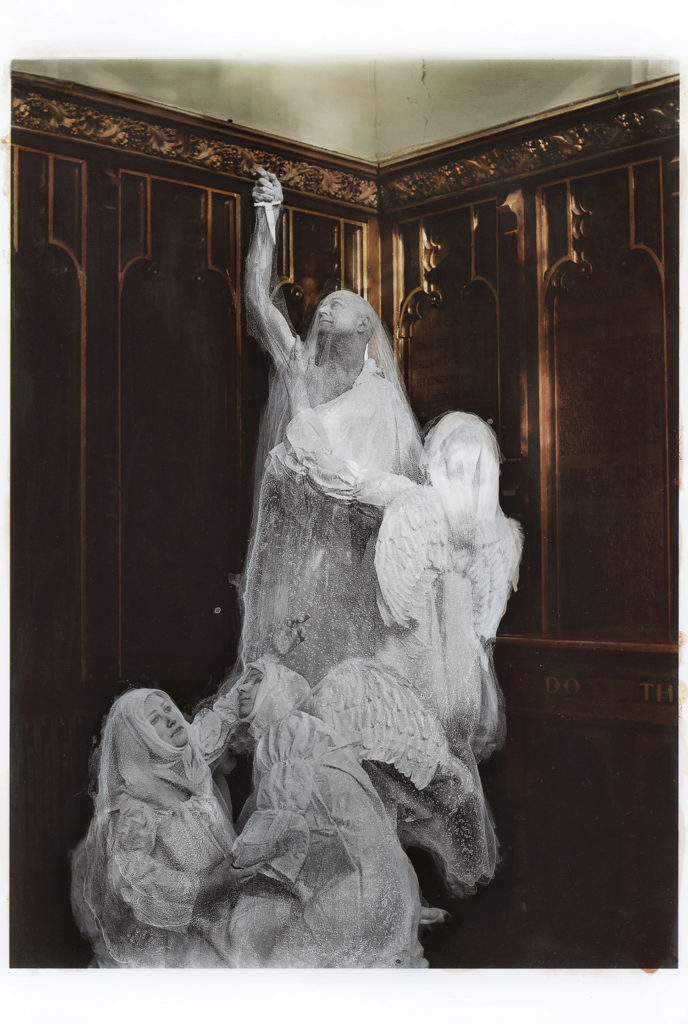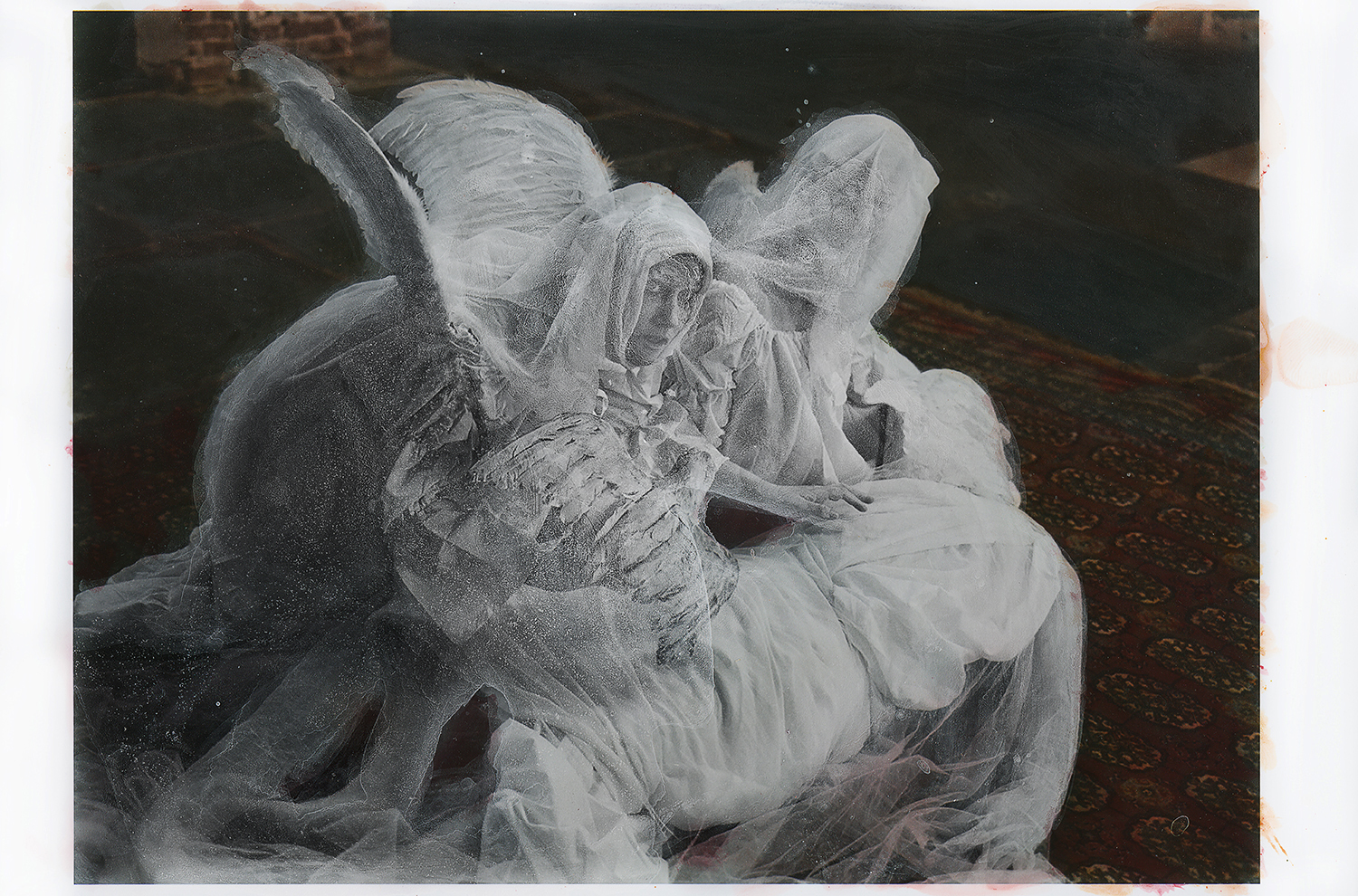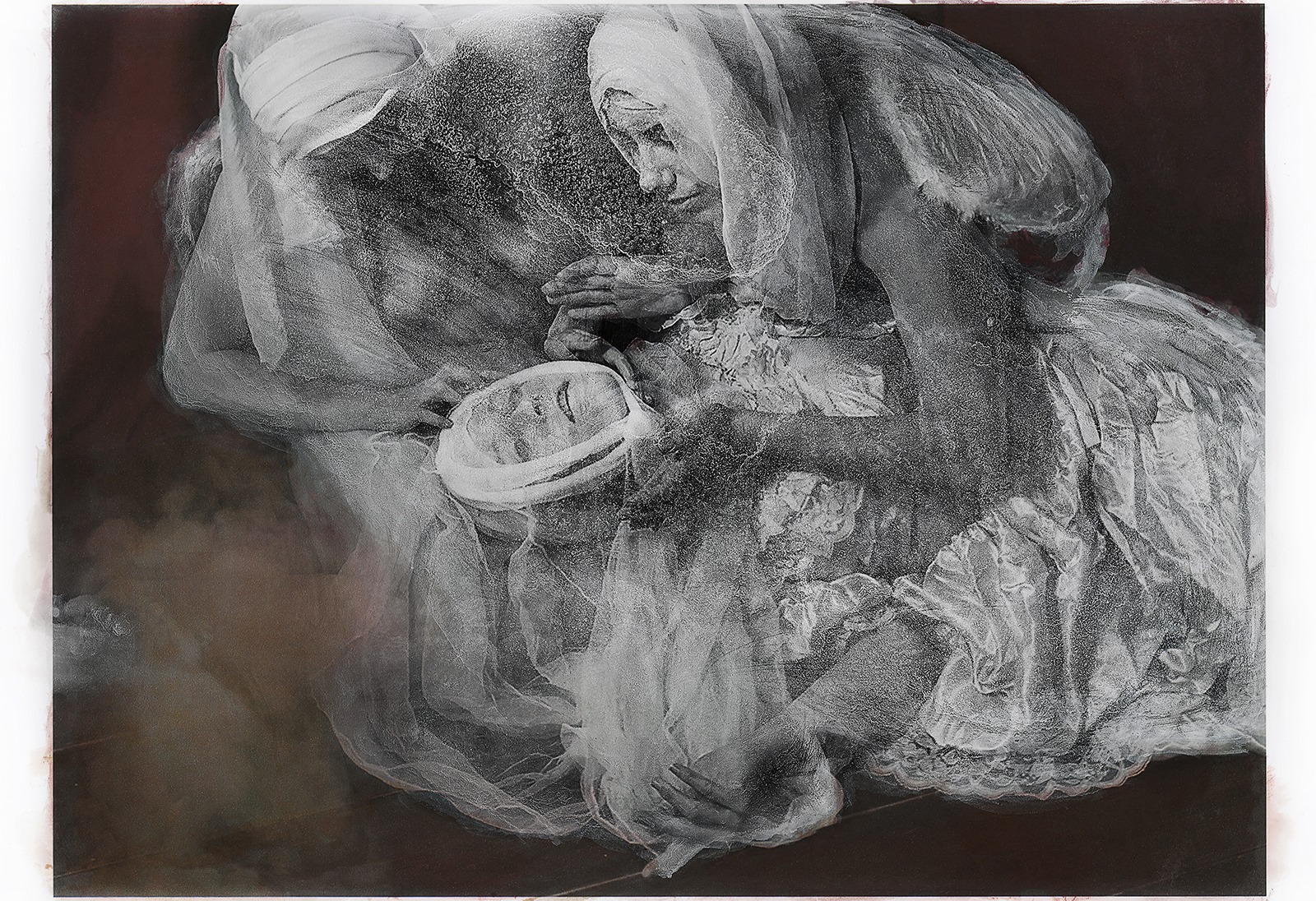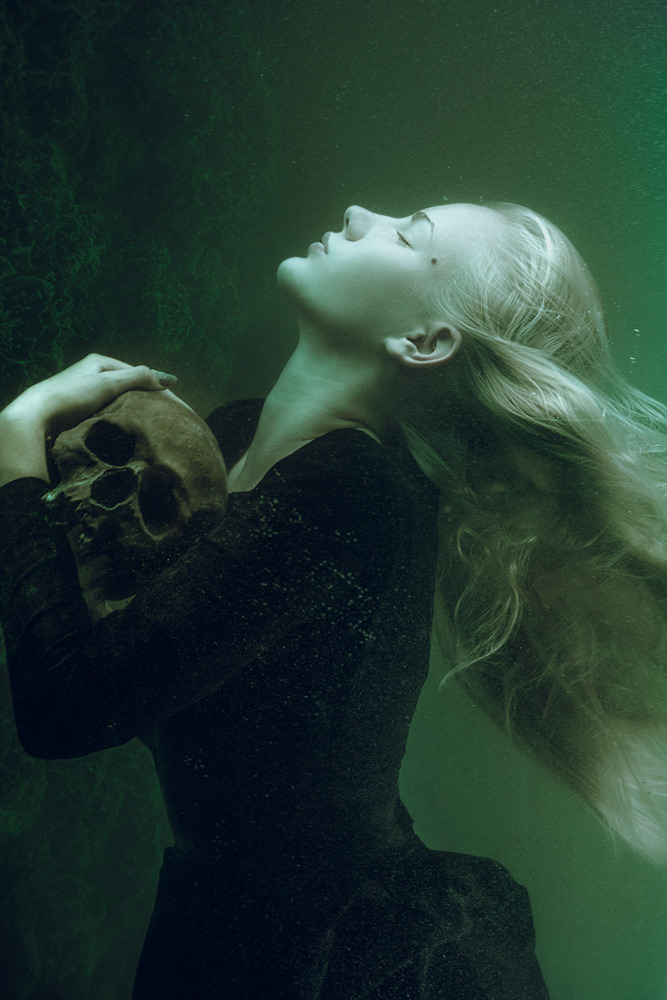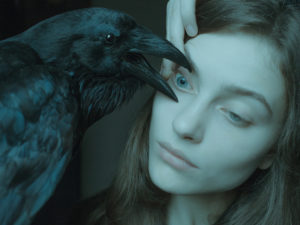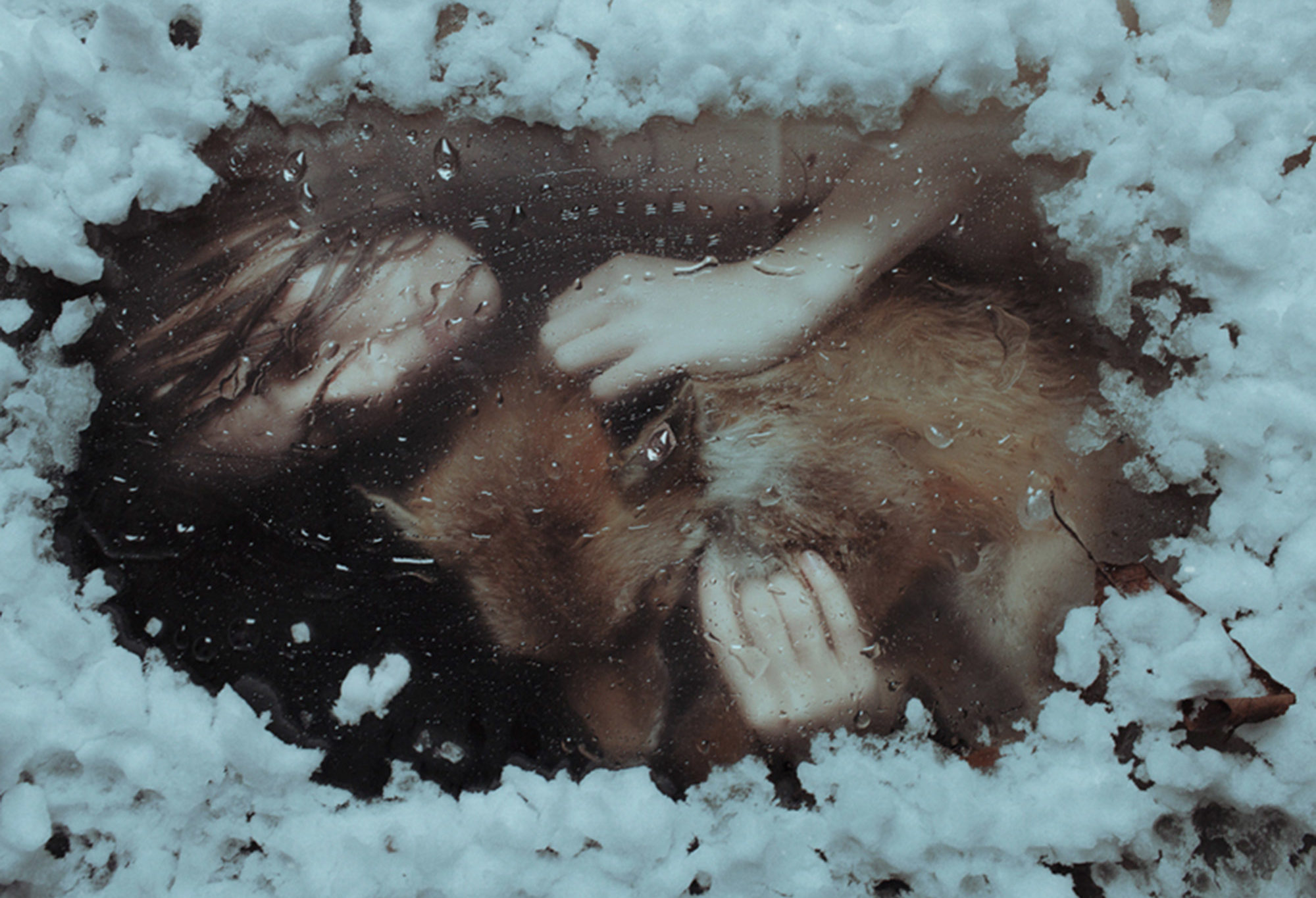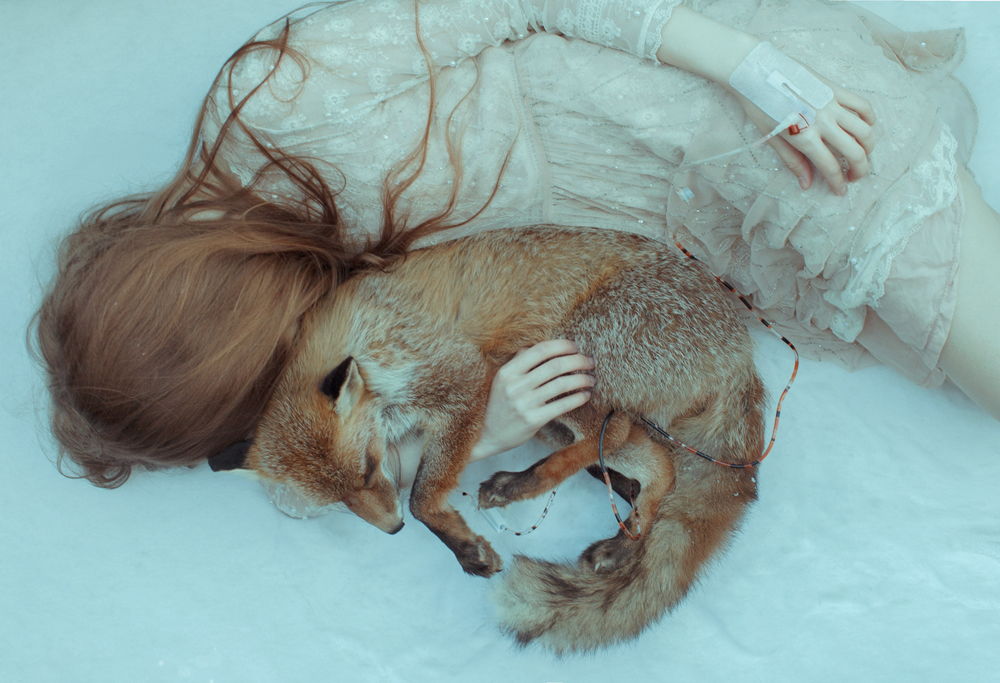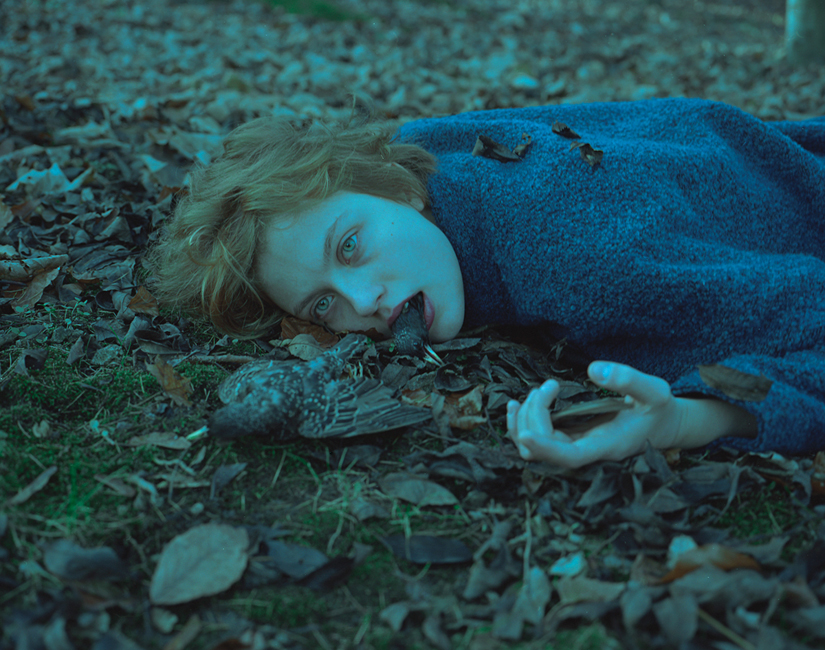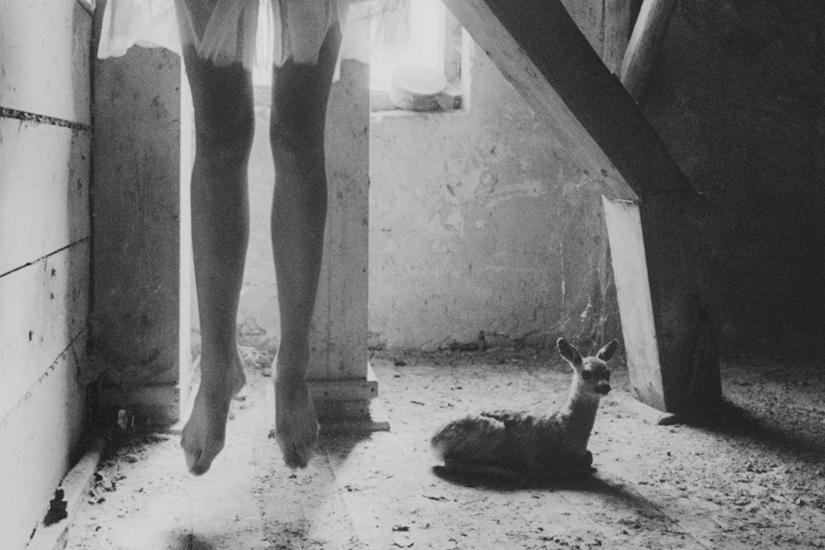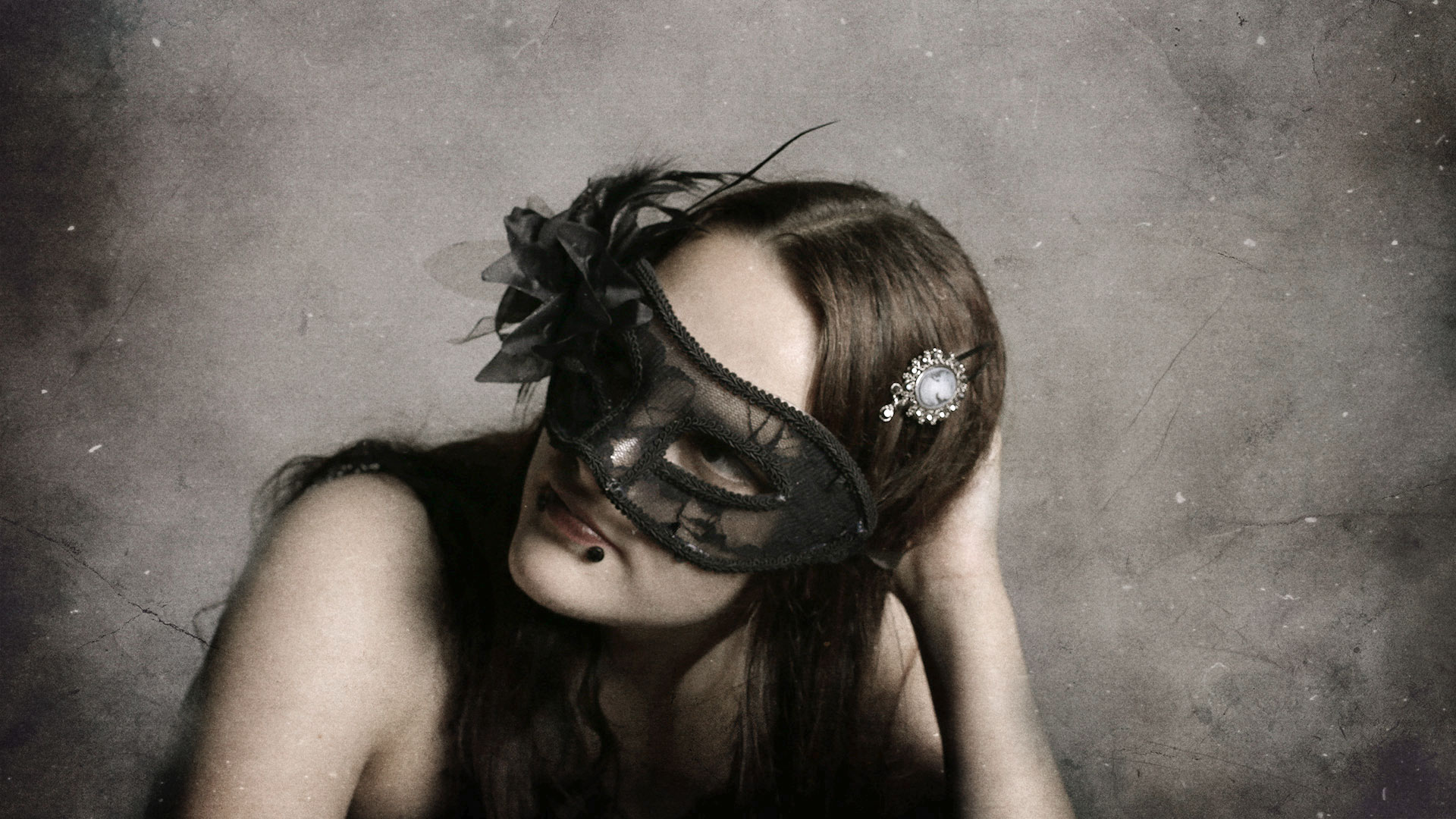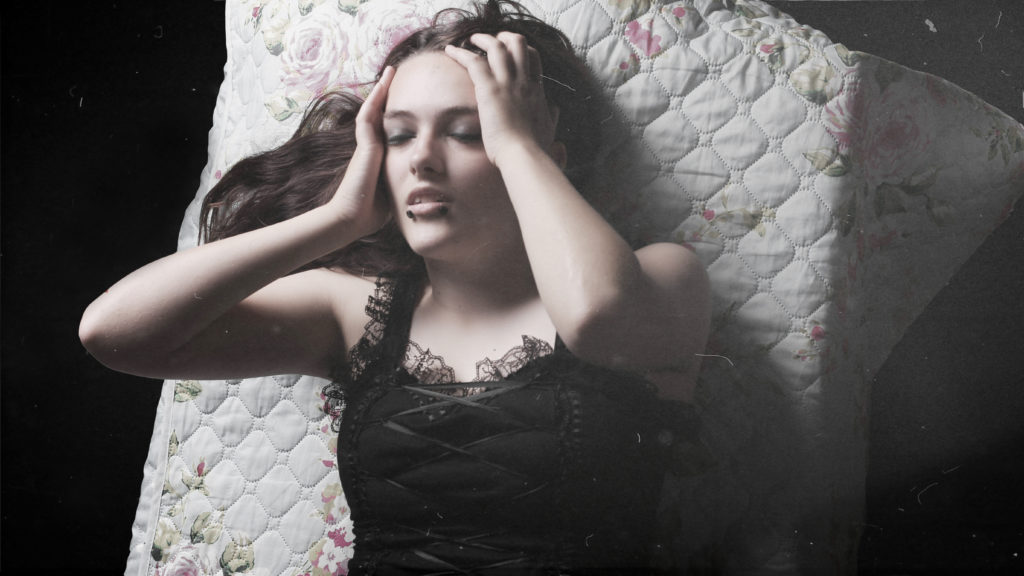Katie Eleanor is a London-based contemporary fine art photographer and Photographic Arts Graduate from the University of Westminster. Inspired by marble sculptures, the sculptural nature of Oscar Gustave Rejlander’s artworks, as well as scenes and characters from myths and from the artist’s fictional world, artistic memory, or, as she evocatively refers to it, the museum of her mind, “The Sialia Marbles” exhibition features hand-coloured photographic prints depicting ethereal beings frozen in time, marble-like, sometimes angelic-looking, other times ghostly. The uncanny dimension of her artworks stems from the dichotomous interplay between liveliness and death, between the ephemeral and the immortal qualities of her art; the rigidity and physical longevity of marble statues and the fluidity and ephemerality of the human performer; the deathlike stillness and the implication of physical and emotional movement. The beings depicted are also characterised by the archetypal (sentient-inanimate) ambiguity belonging to the Uncanny Valley.
The tableaux of Katie Eleanor allude to religious iconography and mythology art, with some subjects appearing to be solemn, others dramatic, involved in intense narratives. The veiled, white, diaphanous subjects portrayed are reminiscent of spirit photography, which amplifies the uncanny effect. It’s as if we are waiting for the motionless inhabitants of these unknown worlds to transcend the parameters of their existence within art; waiting for them to move towards the edge of the frame or fade away, for their veils to slip and reveal a change in expression, for their eyes to meet ours or glow. At the same time, the resemblance with statues (thus with something inanimate) makes this expectation perplexing.
The process behind the images includes the ritual of painting the models, performing a scene, the post-production process of hand colouring and enhancing the texture of the black and white analogue photographs. “Sialia” is the scientific name for bluebird – which Katie mentions is her alter ego, and the choice to include the word ‘marbles’ in the series title is congruent with her museum without walls parallel- a collection of uncanny human statues from her imaginary museum. The use of analogue photography and old film techniques brings uniqueness to the artworks; the physical, haptic quality of her work makes it more memorable and evocative, taking us on a mental trip through photographic art practices and through history, bringing back cultural artefacts and the sensory, magical properties of photography belonging to the pre-digital age. In more ways than one, Katie Eleanour’s photographs transcend temporality, having a hauntological dimension.








“I love tableaux vivants and creating intense, ambiguous scenarios with my performers. Angels are found in so much religious and historical visual culture, so they are familiar. They also symbolise protection, particularly when the series is viewed as a whole. I am not a particularly religious person, but I believe in sanctuary. My brain and my imagination are my sanctuary, and that is something I associate with these solemn spaces. It’s all creating a sanctuary for the viewer to inhabit, a sense of stillness and introspection.” – Katie Eleanor, Image Journal interview, 2019
Among the figures depicted in her work, you can find Saint Lucy and Daphne. After seeing a painting of Saint Lucy by Francesco Del Cossa, displayed at the National Gallery, the artist reveals:
“I was struck by the contrast between the brutality of her story and this ornate, delicate, almost whimsical rendering. In my version, the bandages over her eyes are significant, as I find the eyes of sculptures particularly haunting and vacant. This piece is a kind of homage to an amazing character in history.” – Katie Eleanor, Image Journal interview, 2019
“The Sialia Marbles” collection is on show at MMX Gallery until 15 February 2020
